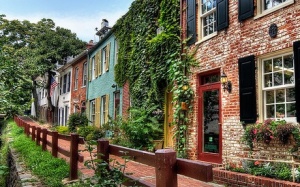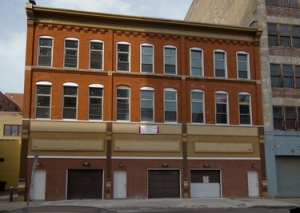 From Traditional Building writer Ralph Muldrow: "Historic Charleston, SC, has weathered more than its share of traumas since its founding in 1670. The seal of the city has a Latin phrase that translates, 'She guards her buildings, manners and laws.'
"Of course, the buildings do present a range of styles, but the pervasive typology is that of the single house. The plan has the narrow end facing the street with a false door which leads to a real front door half way down the side of the house. This was greatly augmented by about 1800 when the false door became the entryway to a long, often double-height side porch, called a 'piazza' in Charleston.
From Traditional Building writer Ralph Muldrow: "Historic Charleston, SC, has weathered more than its share of traumas since its founding in 1670. The seal of the city has a Latin phrase that translates, 'She guards her buildings, manners and laws.'
"Of course, the buildings do present a range of styles, but the pervasive typology is that of the single house. The plan has the narrow end facing the street with a false door which leads to a real front door half way down the side of the house. This was greatly augmented by about 1800 when the false door became the entryway to a long, often double-height side porch, called a 'piazza' in Charleston.
"We find this floor plan recurring from the Georgian period, through the Adam (Federal) Style, the Greek Revival Style, Victorian styles, etc., but in all of these exotic garbs the floor plan, fenestration and formality remain constant, with only a few elements giving the house a discernable 'style.' The distinct urbanism created by the repetition of the single house over large areas of the city is an embedded 'sustainable' urban form. These older blocks provide a syncopated rhythm to the street.
"This 'weathered city' utilized her unique, long-standing architectural layout of houses turned longways into their sites to create a shelter appropriate to the climate. The piazzas all face south and west, which allows them to catch prevailing breezes and allows for the shading of windows when the sun is high in the summer." Full article with photos here.


















